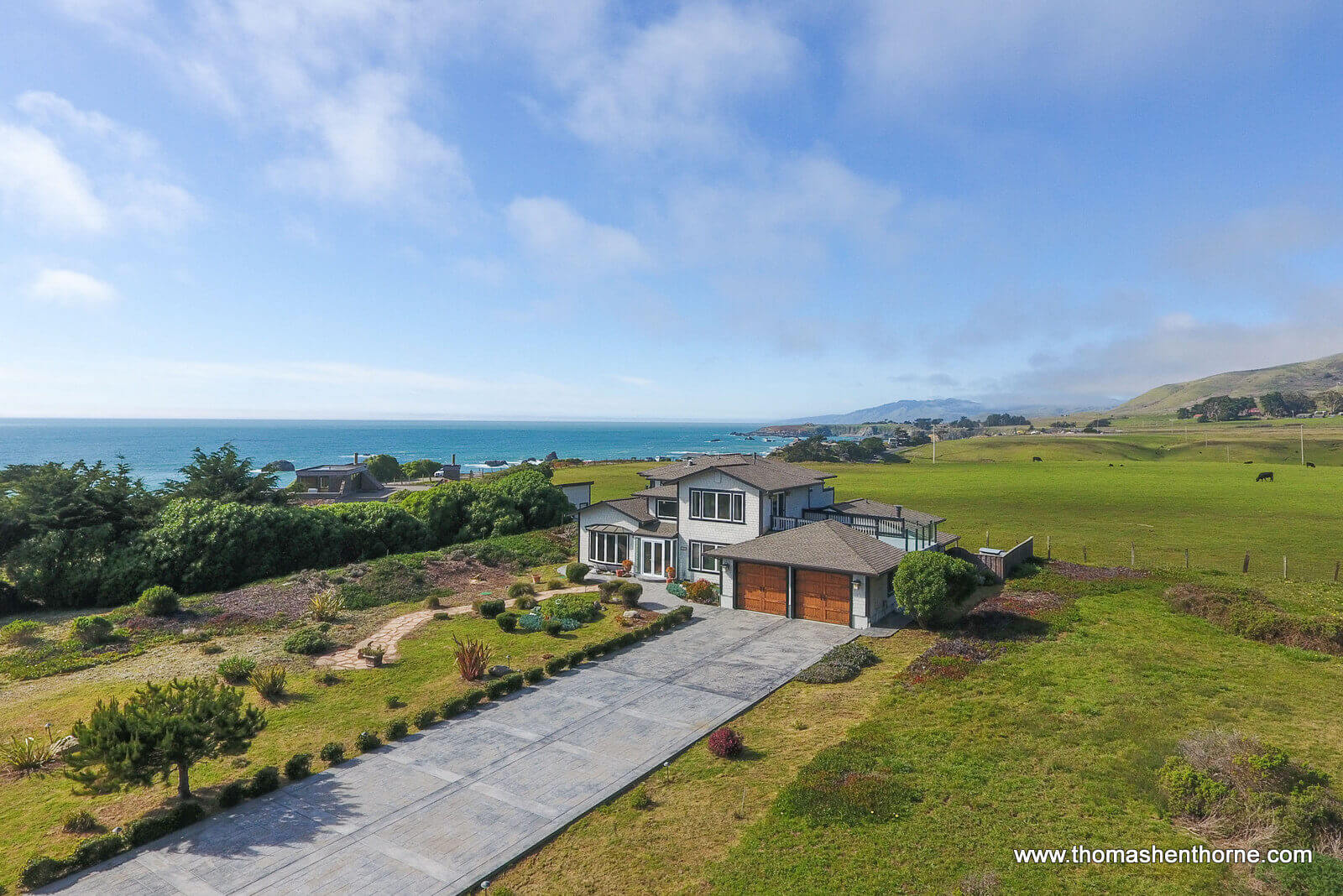The December 2017 Marin County Real Estate Market Report
Union Square in San Francisco, Photo by Bob Fleshman
Welcome to my final Marin County Real Estate Market Report of 2017! What a year it has been. We have seen the national trend of low home inventories also impact the SF Bay Area which has continued to push pricing ever higher. Even the normally quieter coastal market has awakened, with my listing 125 Calle del Sol (pictured below) selling last month, and Sea Arches going into escrow, due to close this month.
You’ve heard this before from me – we had another month of increasing prices and decreasing inventory. The median price was up almost 13.5% in November versus prior year, and new listings were down almost 12% versus 2016. Marin County continues to be the “blue chip stock” of real estate, with demand outstripping supply.
There is much speculation that the tragic fires to our north, which destroyed thousands of homes, is fueling increased demand here in Marin County. At this point there’s only anecdotal evidence pointing to that, but what we are definitely seeing is buyers are more concerned about lining up tradespeople to effect repairs and remodels. Now more than ever, homes in “move in condition” are commanding a premium. I expect that trend to continue in next year’s busy spring season.
There is much discussion about the tax reform proposals in Washington, DC. The initial versions of the House and Senate bills were cause for alarm in the real estate community as they limited or eliminated the ability to deduct mortgage interest as well as state taxes. I am going to refrain from comment until the final bill is submitted and passed, however the National Association of Realtors does believe the initial proposals, if passed, will have a negative effect on the national housing market next year.
Here in Marin County, we live in a bit of a bubble, situated in an area of amazing natural beauty, strong job growth and minimal new housing construction. Barring a major economic event, conditions are favorable for a continued strong market as we look to spring 2018.
As the year comes to a close, I would like to take a moment to thank all of you for your support in 2017. I could not do this work that I love without you, and I am truly thankful. I wish you and yours a restful, happy holiday season.
As always, I am happy to discuss the Marin real estate market with you — just give me a call at 415-847-5584. Please scroll down to see this month’s Marin real estate market graphs.
125 Calle del Sol in Bodega Bay – Just Sold by Thomas
Marin County Real Estate Market Report December 2017 Dashboards
Marin County Real Estate Dashboard:
Home Prices
For sale prices increased by 1.5% versus last month and increased by 5.1% vs. the same month in 2016.
Average sold prices decreased by 1.9% vs. last month but increased by 15.4% vs. the same month in 2016.
The median home price was flat vs. last month and increased 13.5% vs. the same month in 2016.
The average price per square foot sold decreased by 0.4% vs. last month and increased by 16.5% vs. the same month last year.
All information courtesy of and copyright by BAREIS MLS and TrendGraphix.
Dashboard compiled by Thomas Henthorne, all rights reserved.
Marin County Real Estate Dashboard:
Inventory
Number of homes for sale decreased 25.1% vs. last month and decreased 9.6% vs. the same month in 2016. New listings decreased 11.6% versus November 2016.
Number of homes sold increased 13.2% vs. last month and increased 23.6% vs. the same month in 2016.
Months of inventory decreased 16% vs. last month and were flat compared to the same month last year.
The average days on market decreased by 31% vs. last month and decreased 27.5% vs. last year.
All information courtesy of and copyright by BAREIS MLS and TrendGraphix.
Dashboard compiled by Thomas Henthorne, all rights reserved.
National Real Estate Market Update
Courtesy of Wells Fargo:
RETURN OF THE AFFORDABILITY MIGRATION
“While the return to the center cities appears to be a shift with staying power, the housing market looks to be shifting back towards some of its long-term norms. For starters, most millennials have always lived in the suburbs, so the aging-up of the group into their peak family-formation years should boost first-time home buying, even if we do not see a shift back toward the suburbs. We expect to see demand shift back toward the suburbs, however, as housing costs in and near most center cities have dramatically outpaced incomes. There is also simply less land to be developed and redeveloped in areas closer-in to center cities, particularly relative to the overall population and overall demand for housing.
The return of the affordability migration is already evident in many of the areas that came of age during the era of automobiles and interstate highways. Los Angeles is one of the best examples. The early part of the economic recovery was largely concentrated in areas close to downtown Los Angeles, which has seen one of the most dramatic makeovers in recent memory, with thousands of new apartments, hotels, restaurants and entertainment venues. Residential development also increased in other close-in areas, including Santa Monica, Venice Beach and much of West Los Angeles. By contrast, demand for housing in inland areas has been slower to come back on-track. The momentum now appears to be shifting back toward the suburbs. Population and employment growth in the Inland Empire has surged over the past year and permits for single-family homes have risen 34 percent. Residential development is also perking up in Ventura County and plans appear to finally be falling in place to bring thousands of new homes to Newhall Ranch located in Santa Clarita, in the northern edge of Los Angeles County. Development is also returning to the suburbs in other historically suburban-driven markets that saw a renaissance in their urban and in-town areas earlier in the decade, including Dallas, Atlanta, Phoenix and Washington, D.C.
With preliminary data now available through September, we have a pretty good idea of where home sales and housing starts will finish 2017. Sales of new homes are expected to rise 8.7 percent, while sales of existing homes rise 0.4 percent. The median price of an existing home is expected to rise 5.3 percent, while the price of new homes should rise a smaller 2.7 percent. The smaller rise in new home prices reflects the shift in construction toward more lower-priced homes, largely in suburban areas in the South and West.”
What This Update Means For You
SELLERS: If you’re thinking of selling your home, don’t listen to your Uncle Fred at dinner who says it is a sellers market and buyers will pay anything. Buyers are well educated and the majority in Marin County are working with very experienced and savvy agents who know values. Keep an eye on some of the trends we are seeing — that while inventories remain tight, sellers are having a hard time pushing pricing higher than last year. Bottom line: price your home for this market, not for the market in early 2016 or 2015.
BUYERS: For home buyers, the good news is that more balance is coming to the Marin real estate market even though inventories are tight. Look for homes that are well-priced and be prepared to move quickly. Chances are you are looking for the same things most other buyers are also seeking (see my list below.) Set up property alerts on my website so you can immediately see new homes on the market, and make sure you are pre-qualified so you present a compelling offer. (You may wish to read my article Buying a Home in Marin County for more tips and advice.) One other tip: Ask your agent to run aged inventory reports in and above your price range. Sometimes there are some real gems that the market has overlooked due to pricing or other factors.
What Are Buyers Looking For Right Now?
In speaking with buyers, they want it all right now, with the following at the top of their lists:
- Great schools
- Single-level
- Easy commute
- Walk to restaurants and shops
- Views
- Quiet streets
- Remodeled homes in move-in condition
Smart buyers, which is almost all of them, realize they cannot have all of those attributes and buying a home in a market like Marin County is a series of tradeoffs. For example, they may choose to give up walking to restaurants to be in the hills with a view of the bay. In any event, we are seeing buyers that are more tech-savvy than ever and who have done their homework, reading market reports such as this one and spending a lot of time online looking at homes.
Wondering If You Should Buy or Rent?
This handy calculator is a great place to start. Then give me a call and let’s discuss.
Marin County Real Estate Market Report Charts
(click any slide to enlarge & launch slideshow)
“For Sale” vs. Sold Home Prices vs. Median Home Prices
Marin Home Prices List Price vs. Sold
Marin County Months of Inventory Based on Closed Sales
Average Price Per Square Foot
Would you like to see this data for your town only?
I am also now rolling out market update charts for selected towns in Marin. Please click the below for local real estate market updates & charts:
Kentfield Real Estate Market Update
Mill Valley Real Estate Market Update
I hope you have found my Marin County Real Estate Market Report informative. Please feel free to add your comments, questions or suggestions in the comments section below. If I may be of any assistance in helping you attain your real estate goals, please call or text me at 415-847-5584 and I will be in touch right away.
Please subscribe to my blog to receive my latest articles and market reports via email:
What do YOU think? What would you like to see in this report going forward? Please leave your comments in the section below.











Another wonderful report. Love the graphics and stats. Wishing you a very happy holiday season!
Thank you, Judy, happy holidays to you as well!!
Thank you for publishing an understandable report each month. Happy holidays.
Maria thank YOU for reading my report! Happy holidays to you, too!